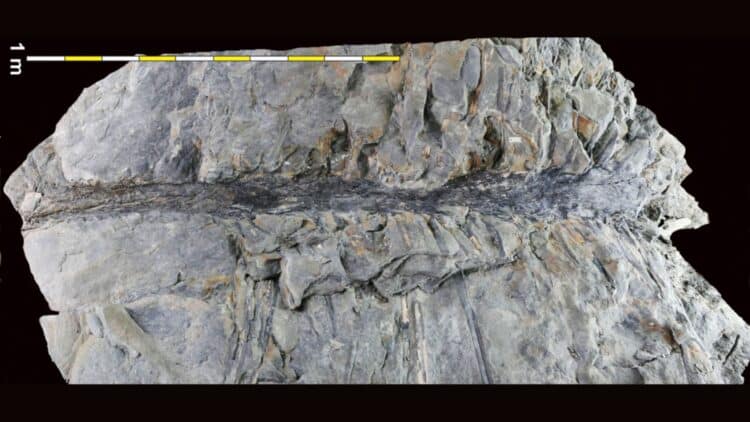For a long time, we thought we knew the family tree of life on Earth well. After all, it seemed to be set in stone: first fish, then amphibians, until reptiles emerged, and only much later, dinosaurs. But what if a footprint left in the mud hundreds of millions of years ago challenged this timeline? That’s exactly what happened… A chance discovery in the Australian outback could literally change everything science thought it knew about reptiles’ first steps on the planet.
The time when the Earth was still liquid in history
Let’s now take a brief science lesson, going back in time to about 350 million years ago. The world was different. No tropical forests, no vast deserts. Just a supercontinent called Gondwana, still under construction, covered by shallow swamps and primitive forests. It was in this landscape that the first tetrapods emerged, which were nothing more than four-limbed creatures that dared to trade their fins for legs.
Well, until recently, scientists estimated that amniotes, the group that includes reptiles, birds, and mammals, had only appeared around 320 million years ago. This prediction came from body fossils and footprints found primarily in the Northern Hemisphere. There was just one problem: the southern part of the planet, especially ancient Australia, remained practically blank in this puzzle.
And it was precisely this gap that began to be filled when two amateur paleontologists found, on a stone slab in the state of Victoria, footprints with well-defined claws. Upon analyzing the find, a team led by John Long, a professor at Flinders University, realized something breathtaking: the footprints were about 350 million years old. That is, 35 to 40 million years earlier than previously thought…
The non-dinosaur track that changed science
In fact, this isn’t just a curious detail for fossil enthusiasts. It’s a scientific twist. The presence of claws indicates the animal wasn’t a simple amphibian. It was, most likely, a primitive reptile, the kind that already laid eggs with protective membranes, a giant evolutionary step that allowed life to move away from water and onto solid ground.
“I’m stunned. A single track-bearing slab, which one person can lift, calls into question everything we thought we knew about when modern tetrapods evolved.” said the study co-author Per Ahlberg, professor of paleontology at Uppsala University.
Not stopping there: the discovery indicates that tetrapod evolution was faster than previously thought, and that the first reptiles may have emerged in the southern part of the world, rather than the north, as previously believed. A fascinating detail for those who thought the main stage of life’s history was exclusive to Europe and North America (in addition, we can’t forget the polar dinosaurs discovered in Antarctica).
What does this reptile discovery change going forward?
Simply put, the new dating of these footprints forces science to reexamine all the branches of the evolutionary tree; incredible, isn’t it? After all, if amniotes emerged earlier than expected, other groups of animals may also have older, less linear histories than we previously thought.
And what’s more: since these are footprints, not bones, scientists now realize there’s much to explore in Earth’s forgotten traces. A body fossil reveals what the animal looked like. But a track? It tells how the animal lived, moved, and interacted with its environment.
Yes, a simple footprint on a piece of rock has become a time capsule for us. It not only rewrites important chapters in the history of life, but also reminds us all that science is always under construction, and that the ground we walk on may hide secrets from eras that predate even the dinosaurs. And that’s no exaggeration; if you want another example of this, check out this eerie white skull in the desert, found after 14,000 years.


